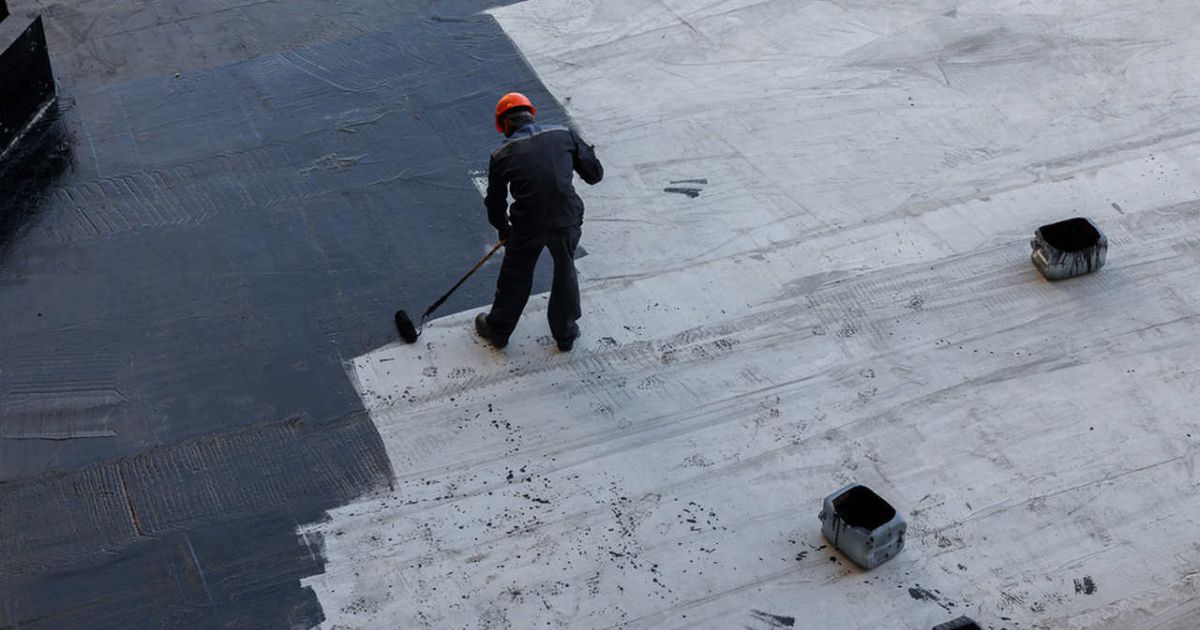Whether you are constructing commercially or residentially, there are a lot of elements that make the structure sturdy and durable. The apparent elements are the foundation, walls, roof and many more. However, it’s the uncalled actions like proper waterproofing applications that people tend to forget while constructing.
The overall structure of the place you are building can easily collapse over time if you do not understand the importance of waterproofing at the time of construction.
For the said reason, we bring this article to you - a place for you to understand the waterproof engineering method for building your project.
While at it, make sure you also skim through the do’s and don’ts of the waterproofing application to have a better understanding of the whole process.
In simple terms, waterproofing is making sure that the construction of the structure is water-resistant - a skilful amalgamation of an additional layer on roofs, walls, floors, etc.
This layer is a coating, through which the surface remains mostly unaffected by water or moisture, under any specified conditions.
Other than just construction, waterproofing is also used to make any surface water-resistant in your everyday life. It can tackle seepage, possible water outlet cracks, and other damp places that need attention.

The secret, however, in Elephant Shield’s waterproofing is the kind of material we offer. Our liquid rubber is one of the easiest ways to make your surfaces waterproof, with 950% stretchability and a 95% recovery rate.
When paired with our simplest application process, you are bound to forget the problems that you face with moisture in your home or office surfaces.
That said, there are a few Do’s and Don’ts you need to know in terms of waterproofing. Here is the list -
1. The Exterior of Your Structure -
The first thing you need to make sure of is the design of the exterior of your structure is made in a way that has minimised environmental effects. From the outside, working on the siting and orientation of the building can help reduce environmental loads on the structure.
Similarly, on the inside, executing intricate details such as drip edges, element projection, and recessed windows can reduce moisture retention and other environmental loads.
When you structure your project in this way, there is a less chance of weather being the reason behind making your walls weak. Water clogging in monsoon and extreme heat in the summers can be avoided if you execute the above suggestions. When paired with Elephant Shield’s waterproofing, there is nothing like it!
2. Ensure Proper Surface Preparation -
Proper surface preparation is essential to ensure that the waterproofing material adheres properly to the surface. This may involve cleaning the surface, removing any existing coatings or membranes, and repairing any existing damage.
3. Moisture Control -
Avoiding surface rundown is essential; it majorly contributes towards making the surfaces weak. The moisture that it creates can cause seepages and will hinder waterproofing application.
Executing bulk-water water management strategies to help reduce moisture levels is important. Considering these will lead to building a great waterproofing design - a structure that will last for a long time.
4. Test for Leaks -
Once the waterproofing application is complete, it is important to test for leaks to ensure that the material has been applied correctly and that there are no areas where water can penetrate.
1. Avoiding Durability
It often happens that to achieve a certain design, you tend to choose materials that are not durable in the long run.
In such cases, you need to pay attention to the manufacturer’s recommendations, evaluation reports and the nature of the products.
2. Ignore Environmental Factors -
Environmental factors such as temperature, humidity, and rainfall can all impact the effectiveness of waterproofing materials.
It is important to take these factors into consideration when selecting materials and planning the application.
3. Using Incompatible Materials
An ideal waterproof engineering design would encompass compatible materials for the process of waterproofing.
This process largely depends on appropriate detailing of the materials, and proper inclusion of components such as resistant barriers, sealants, coating, etc.
This is why you need to consult the waterproofing experts; we, at Elephant Shied, can guide you through many intricacies of building materials for you to come to an educated understanding.
4. Neglect Maintenance -
Even the best waterproofing materials will require maintenance over time. Neglecting maintenance can lead to leaks and other problems, so it is important to follow manufacturer recommendations for upkeep.
To Sum Up…
Waterproof engineering is an essential aspect of construction, particularly in residential buildings. The application of waterproofing materials involves specialised techniques and materials that are designed to create a barrier between the building and external water sources.
A waterproof design can help you retain your structure for a long time. It can help you avoid future moisture damage you may encounter.
Our in-house waterproofing experts can guide you through many of the processes of building the right structure, using the proper material and many more.
Contact us today to know more!

Waterproofing Specialist